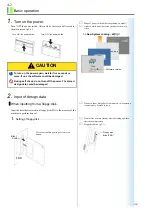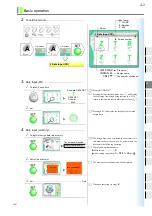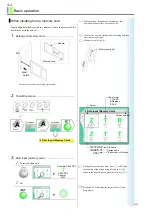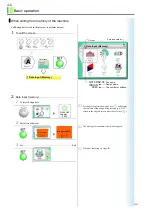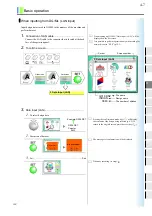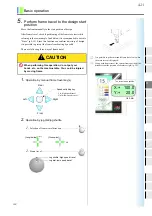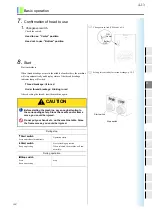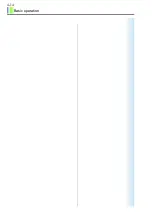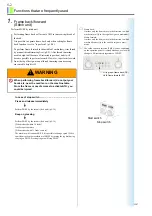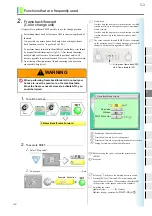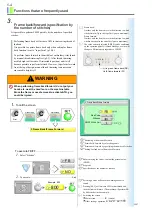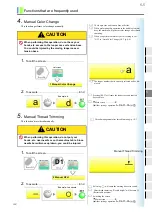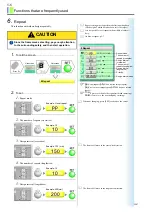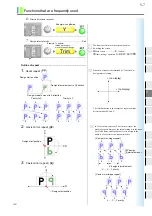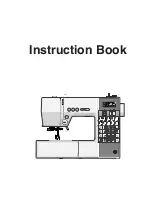
5-2
Functions that are frequently used
1.
Frame back/forward
(Stitch unit)
Perform FB/FF by stitch unit.
Performing frame back will activate ATH to trim sewing thread of
the head.
It is possible to operate frame back only when setting for frame
back function is set to “to perform” (p.10-4).
To perform frame forward in the middle of embroidery, trim thread
by manual thread trimming first (p.5-5). After thread trimming,
needle height will become H (retractable position) and it will
become possible to perform forward. However, to perform forward
from the top of design, manual thread trimming is unnecessary
since needle height is H.
In case of stop switch .........................................................
WARNING
When performing frame back/forward, do not put your
hands etc. near the needle or on the machine table.
Since the frame or needle moves to activate ATH, you
could be injured.
Frame back:
It makes only the frame move in the direction to which
stitches return (Up to the top of design at a maximum).
Frame forward:
It makes only the frame move in the direction to which
stitches advance (Up to the end of design at a maxi-
mum).
The value currently selected (FB/FF) can be confirmed
on the operation panel. At thread breakage, a value will
change to FB tentatively regardless of FB/FF.
Lit in green: frame back (FB)
Unlit: frame forward (FF)
!
Press and release immediately
Perform FB/FF by the set unit (feed unit) (p.5-16).
Keep on pressing
Perform FB/FF by the set unit (feed unit) (p.5-16).
[When released within 10 feeds]
It will stop at that time.
[When released with 11 feeds or more]
The machine will continue FB/FF. It is possible to change speed (250 to
equivalent to the max revolution) of FB/FF by turning the jog dial during
carrying on FB/FF. Pressing it again will stop FB/FF.
Start switch
Stop switch
JZ07
Summary of Contents for TCMX 601
Page 1: ...USER S MANUAL TCMX 601 M XL01 E 2006 07 TCMX 601 ...
Page 18: ...Name of each part and function 2 7 1 2 3 4 5 6 7 8 9 10 11 12 13 14 15 ...
Page 19: ...2 8 Name of each part and function ...
Page 41: ...4 14 Basic operation ...
Page 65: ...6 8 Convenient functions ...
Page 105: ...11 12 Software installation and necessary ...
Page 119: ...14 6 Maintenance ...
Page 129: ...15 10 Supplemental documentation ...

